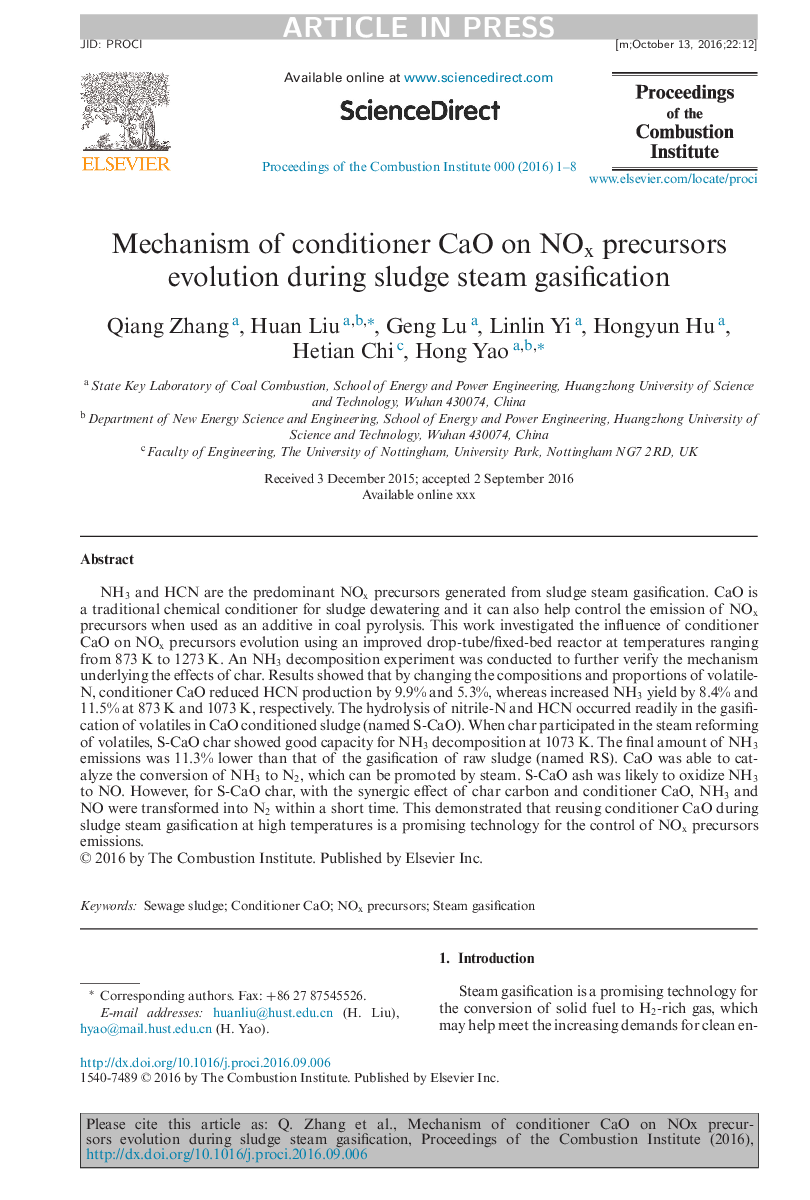| Article ID | Journal | Published Year | Pages | File Type |
|---|---|---|---|---|
| 4915460 | Proceedings of the Combustion Institute | 2017 | 8 Pages |
Abstract
NH3 and HCN are the predominant NOx precursors generated from sludge steam gasification. CaO is a traditional chemical conditioner for sludge dewatering and it can also help control the emission of NOx precursors when used as an additive in coal pyrolysis. This work investigated the influence of conditioner CaO on NOx precursors evolution using an improved drop-tube/fixed-bed reactor at temperatures ranging from 873Â K to 1273Â K. An NH3 decomposition experiment was conducted to further verify the mechanism underlying the effects of char. Results showed that by changing the compositions and proportions of volatile-N, conditioner CaO reduced HCN production by 9.9% and 5.3%, whereas increased NH3 yield by 8.4% and 11.5% at 873Â K and 1073Â K, respectively. The hydrolysis of nitrile-N and HCN occurred readily in the gasification of volatiles in CaO conditioned sludge (named S-CaO). When char participated in the steam reforming of volatiles, S-CaO char showed good capacity for NH3 decomposition at 1073Â K. The final amount of NH3 emissions was 11.3% lower than that of the gasification of raw sludge (named RS). CaO was able to catalyze the conversion of NH3 to N2, which can be promoted by steam. S-CaO ash was likely to oxidize NH3 to NO. However, for S-CaO char, with the synergic effect of char carbon and conditioner CaO, NH3 and NO were transformed into N2 within a short time. This demonstrated that reusing conditioner CaO during sludge steam gasification at high temperatures is a promising technology for the control of NOx precursors emissions.
Related Topics
Physical Sciences and Engineering
Chemical Engineering
Chemical Engineering (General)
Authors
Zhang Qiang, Liu Huan, Lu Geng, Yi Linlin, Hu Hongyun, Chi Hetian, Yao Hong,
